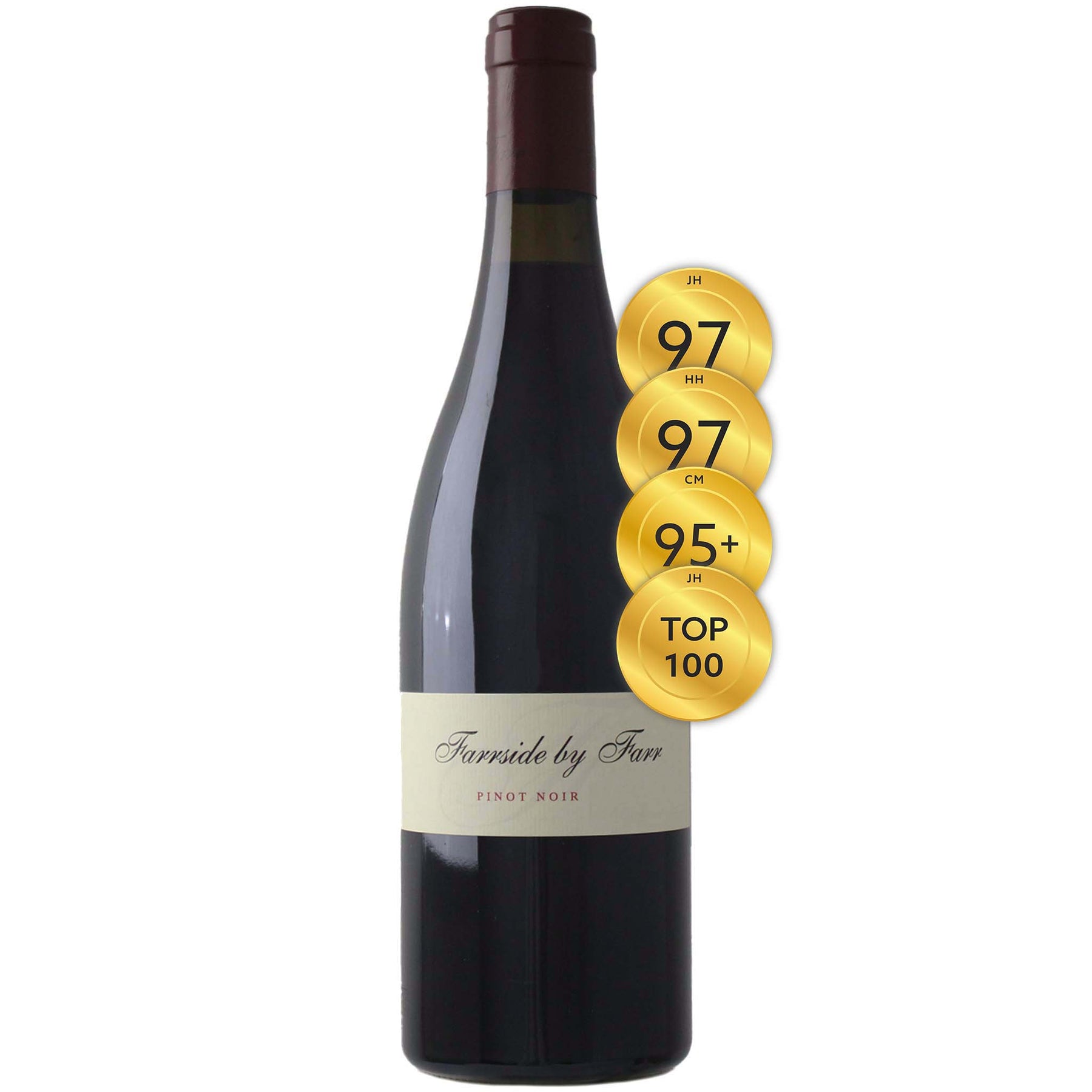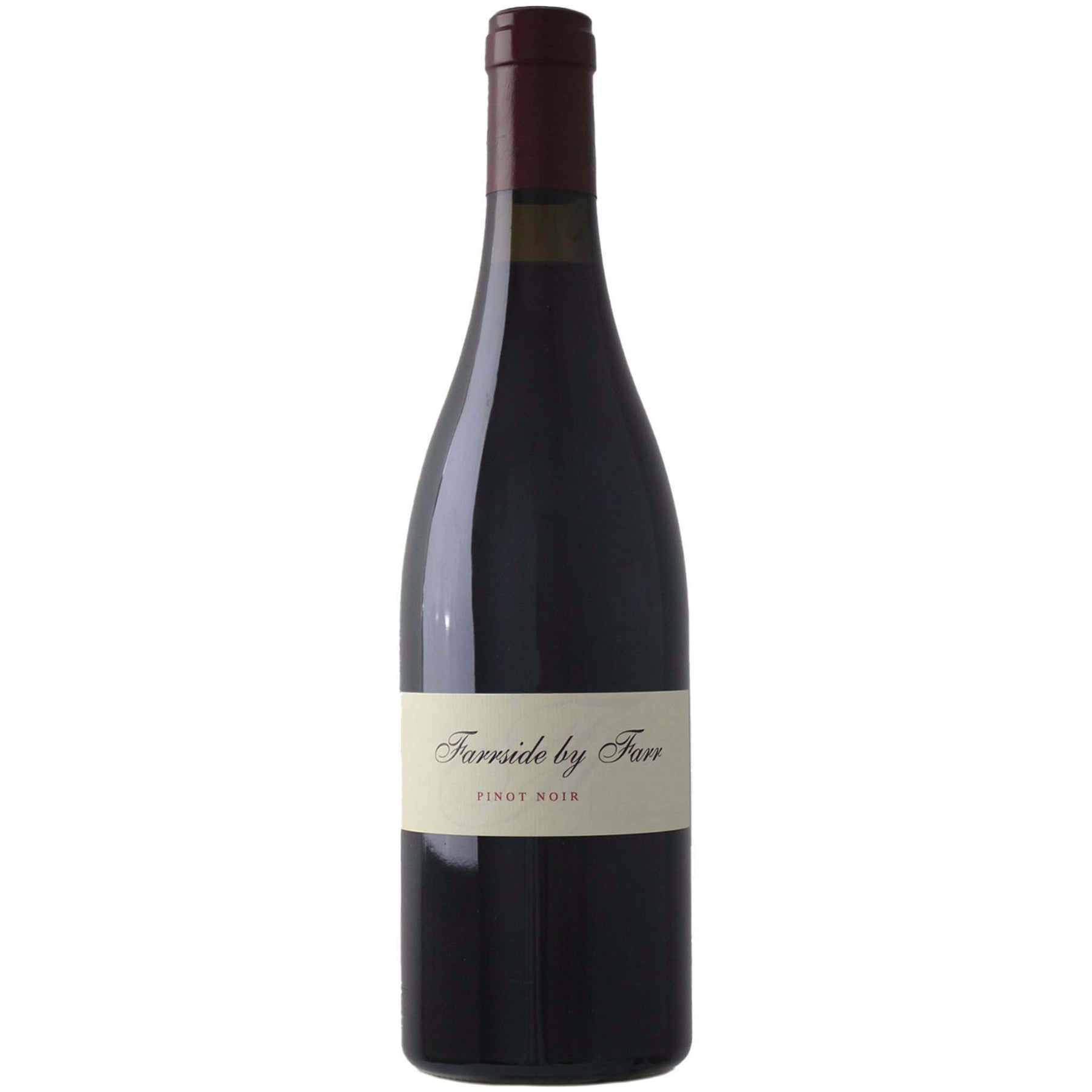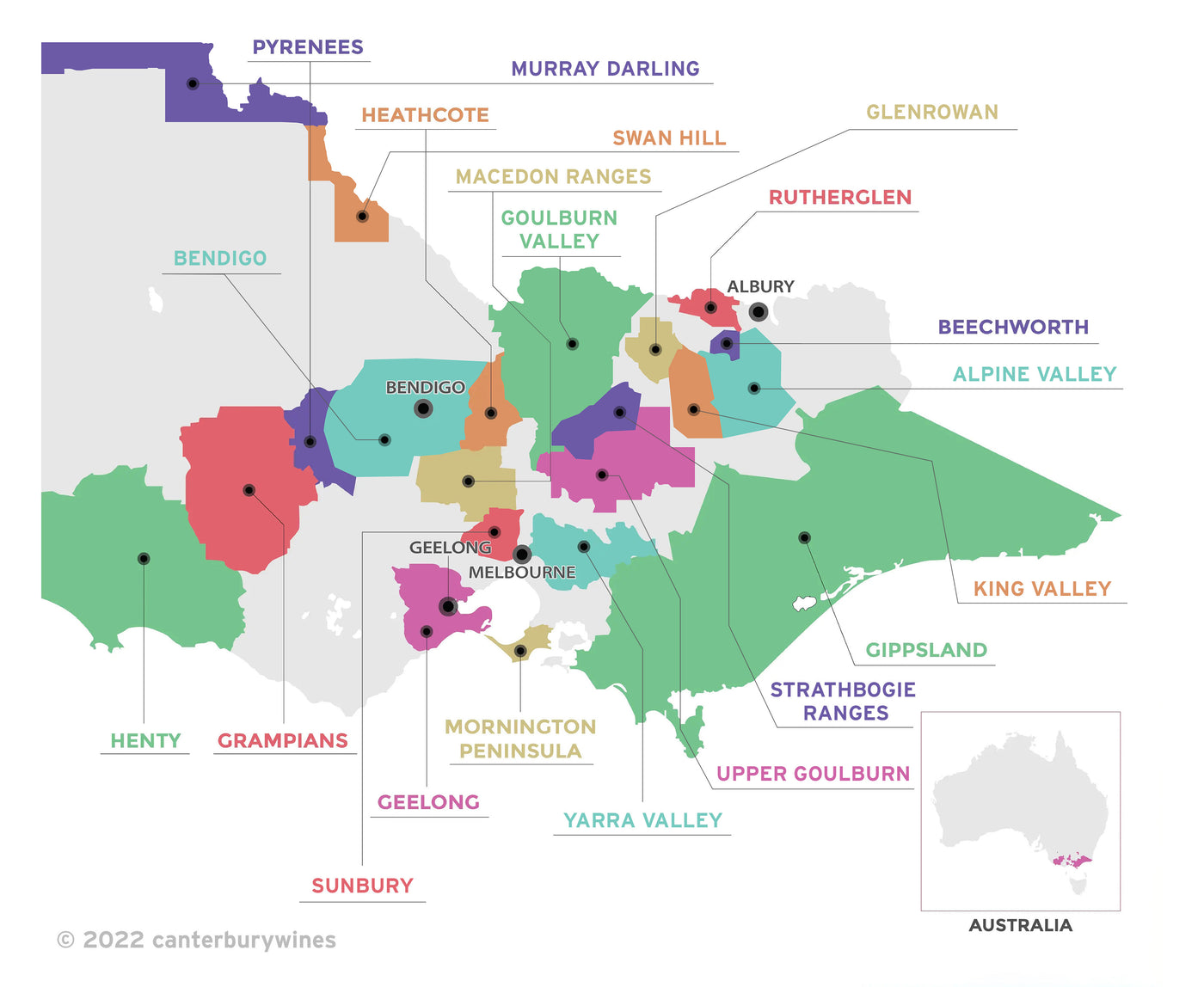

By Farr Farrside Pinot Noir 2018
Style: Red Wine
Closure: Cork
By Farr Farrside Pinot Noir 2018
Warehouse
34 Redland Drive
Vermont VIC 3133
Australia
Critic Score: 97
Alcohol: 13.5%
Size: 750 ml
Drink by: 2035
James Halliday Top 100 Wines of 2021
By Farr produces four single vineyard Pinot Noirs - Farrside, Sangreal, Tout Près and Côte Vineyard. Farrside is characterised by its masculinity, structure and deep meaty, spicy and mineral flavours.
"This wine oozes both quality and class. You're in the most skilled of hands here. Woodsmoke, assorted cherries, twiggy spice notes, flavour-infused acidity and fine-grained tannin. It's a truly beautiful wine." James Halliday
"Farrside vineyard consists of black volcanic soil over limestone on a northeast facing slope. The vine rows run east/west to shade the fruit from over exposure. It is made up with a mixture of 114, 115, 777, 667 and MV6 clones. Even though the Farrside and Sangreal vineyards are only 300 metres apart, the differing conditions means that this vineyard is picked 10 to 12 days after all others. The darker soils and cooler growing conditions produce a more masculine and edgy wine.
The fruit is hand-picked and sorted in the vineyard, then fermented in an open-top fermenter. Between 40 to 50% of the fruit will be stemmed and then cold soaked for four days. We use only the natural yeast for the fermentation process, which takes roughly 12 days. Grape-stomping (known as pigeage) will occur two to three times a day depending on the amount of extraction required, and the wine is then placed in 50 to 60 % new Allier barrels by gravity. It is racked by gas after secondary fermentation, then again at 18 months to be bottled.
A vastly different wine to Sangreal, Farrside is all about masculinity, structure and savoury components, with deep meaty, spicy and mineral flavours. A balanced array of red and black fruits, Farrside pinot noir is fresh and edgy with bucketloads of character. This is a firm yet delicate wine with a long-textured finish." By Farr
Huon Hooke and Nick Farr discuss By Farr: Australian Winery of the Year 2022
Expert reviews
"It takes time in the glass for assertive cedar wood oak to settle into the fruit but at all steps along the way this wine oozes both quality and class. You're in the most skilled of hands here. Woodsmoke, assorted cherries, twiggy spice notes, flavour-infused acidity and fine-grained tannin. It's a truly beautiful wine. Drink by 2030." James Halliday, Halliday Wine Companion - 97 points and Top 100 Wines of 2021
"Medium red colour with a trace of purple in the rim. The bouquet is pepper-spicy, stemmy and savoury, with a whiff of new kid leather, while the palate is elegantly structured and yet firm, tremendously intense, taut as a bow-string, and magnificently balanced. This is a stunning pinot of a complex, bunchy style, already drinking well, with more held in reserve. Drink: 2020 to 2033." Huon Hooke, The Real Review - 97 points
"It's a stand-out wine. Oak seems dominant at first but as it unfurls the tannin seems to reach out and pull the oak back, balance in the process restored. It's an autumnal wine, both twiggy and smoky, with undergrowth and red/black cherry flavours rushed along by lively acidity. The fine-but-firm strings of tannin, the complex flavour profile, the length and indeed the x-factor; all serve to elevate this wine's status. Drink: 2022-2029+." Campbell Mattinson, The Wine Front – 95+points
Awards
James Halliday Top 100 Wines of 2021
About the winery

The Farr estate is located in the Moorabool Valley between Geelong and Ballarat, 100km southwest of Melbourne. Grape growing in this region dates back more than 200 years, with Swiss settlers planting Victoria's first vineyards here in the early 1800s. The rich volcanic soil and continental climate at the estate produce premium fruit with a flavour, bouquet and colour that is unique to our surrounding area.
Gary and Robyn Farr purchased the original property in 1994 and the second section in 1998—this latter had been untouched for almost 40 years and consisted of dense boxthorn and noxious weeds. The final piece of the puzzle, which links the two blocks of land, was purchased by their son Nick in 2011, making a total of 130 acres—of which 36 acres are under vine and the remainder is maintained as grazing and cropping for cattle and horses. With a mixture of different clones and rootstocks, the grape varieties grown here are viognier, chardonnay, pinot noir, gamay and shiraz.
Notoriously brusque but hugely admired and loved, Gary Farr has been making wine in the Moorabool Valley, Bannockburn since 1978. While the landscape has undergone many changes in the past decades, Gary's approach to wine has not and it is this fastidious attention to detail that has inspired a whole generation of vignerons. His experience as a hands-on winemaker was shaped by time spent at Domain Dujac in Burgundy, Cristom in Oregon and Calera in California. Gary developed an appreciation for the beauty of shiraz and viognier from his many journeys to France's Rhone Valley, where he also learned techniques for incorporating these wonderful varieties into his winemaking.
The baton has now been passed on to Nick to carry on the Farr legacy. Nick Farr readily acknowledges the influence of his father in his winemaking and viticultural practices—however, these have been significantly enhanced by his own vast experience. While he was growing up, Nick often worked alongside his father on the family estate before a stint at Rosemount in the Hunter Valley in the late 90s. This was followed by more vintages with Gary as well as at Innisfail Vineyards in the Bannockburn area, where Nick commenced his label Farr Rising. Like his father, Nick has experience at international vineyards, including Cristom in Oregon, Au Bon Climate in California, and Domain Dujac in Burgundy. The reins may have been handed over to the next generation, but Gary, who produced what legendary wine connoisseur Len Evans called 'Australia's best pinot', still keeps a watchful eye over proceedings to ensure the wine continues to meet his high standards.
"The wines we make are not mainstream—they are expressions of our vineyard, our land and what we like to drink. That is what we promise to deliver.” Nick Farr
Climate and soils
"The microclimate of the Moorabool Valley is influenced by winds from the western plains and bracing sea breezes, which regulate the temperature on long, sunny days and cool the air overnight. This climate is key to producing naturally balanced, low-yield fruit that is rich in flavour.
The region's environment is both cool and harsh for viticulture, due to the low rainfall and ever-prevailing winds that sweep across the barren western plains of Victoria. On average we receive 240mm of the 540mm annual rainfall in the growing season. The variation of temperatures between night and day helps us achieve complex and long-palate structures in our wines. Farming our land is not easy, but we believe the best wines are born from the most challenging environments.
Our vineyards are based on ancient river deposits within the Moorabool Valley. Thousands of years later, we are reaping the rewards of these complex and mineral-rich soils, which lend their unique characteristics to our grapes.
There are six different soils spread across the Farr property, with the two main types being rich, friable red and black volcanic loam, and limestone, which dominates the loam in some areas. The other soils are quartz gravel through red volcanic soil, ironstone (called buckshot) in grey sandy loam with a heavy clay base, sandstone base, and volcanic lava rock. The soil's good drainage and low fertility are crucial in ensuring small yields of intensely flavoured fruit.
The soil structure and microclimate at our vineyard make it ideal for growing pinot noir and chardonnay, and our location rates among the world's best for both varieties." By Farr

Victoria
Victoria is home to more than 800 wineries across 21 wine regions. The regions are Alpine Valley, Beechworth, Bendigo, Geelong, Gippsland, Glenrowan, Goulburn Valley, Grampians, Heathcote, Henty, King Valley, Macedon Ranges, Mornington Peninsula, Murray Darling, Pyrenees, Rutherglen, Strathbogie Ranges, Sunbury, Swan Hill, Upper Goulburn and Yarra Valley.
Victoria's first vines were planted at Yering in the Yarra Valley in 1838. By 1868 over 3,000 acres had been planted in Victoria, establishing Victoria as the premier wine State of the day. Today, the original vineyards planted at Best's Wines are among the oldest and rarest pre-phylloxera plantings in the world.
Victoria's climate varies from hot and dry in the north to cool in the south and each wine region specialises in different varietals. For example, Rutherglen in the north is famous for its opulent Muscats and Topaque and bold reds, while the many cooler climate regions near Melbourne produce world class Chardonnay and pinot Noir. Victoria is truly a wine lover's playground.


